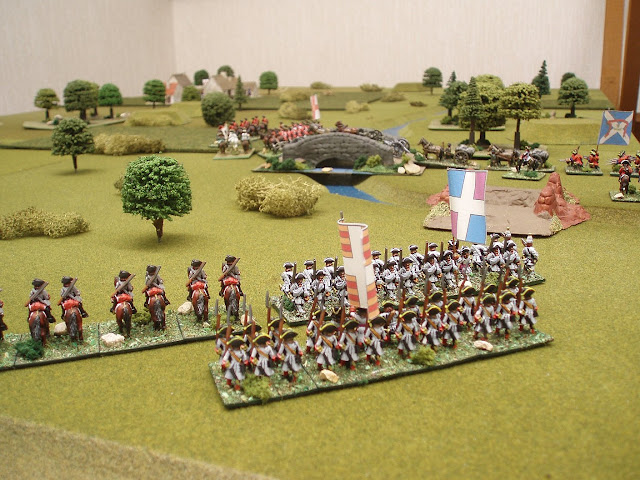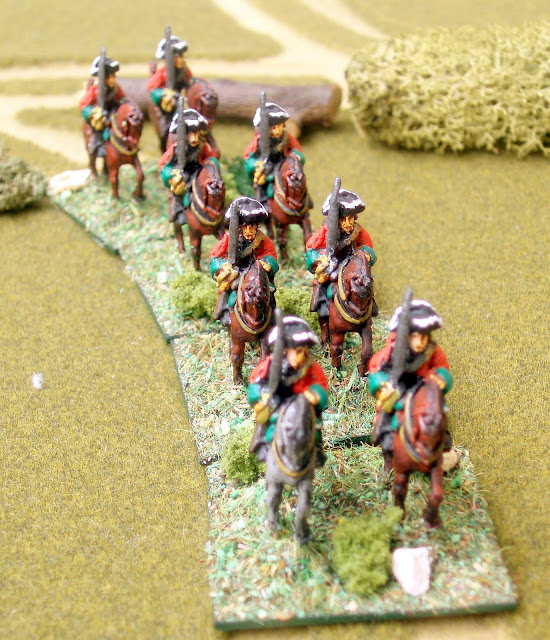...I've just taken delivery of "The Civil War in Hampshire" by G. N Godwin, which I've had my eye on for ages at the Caliver stand at the various wargaming shows, but had not

been able to afford it up until now. Just before Christmas though, I got lucky and managed to find it at a more affordable price on AbeBooks...
Like the recent re-issue of "The War Game" this book is also a 'copy' of the previous book, so the pages all show a scan of the original book/page - but either way it is immensely detailed, and more importantly has some more interesting information on Warblington Castle, the siege, and the other events of 1642 in the area...
Godwin writes that
~ Henry VIII conferred the manor/castle on Sir Richard Cotton - who was the controller of his household. His view is that it was Sir Richard who built the castle, which is Tudor in design (rather than earlier). So a Tudor style castle...
~ It remained in the hands of the Cottons until the English Civil War - which we knew..
~ Sir Richard received Edward VI at the castle in 1552, and records show that the castle was in good repair in 1633 - but shortly after "we know only of a ruined tower, a broken arch, and a few nondescript mounds, and remains of a moat". So we now know there was also a moat..
..now the interesting bits - and we
almost have enough for a scenario..
JEarly in the war (January 1643) the castle (see right for map) had been occupied for Parliament by a
Colonel Norton from nearby Southwick (he obviously did well in the war as he went on to be one of the signatories to the death warrant of Charles I!).
At this time the castle was described as being brick, faced with stone, about 210 feet square. "The whole was surrounded buy a "
fosse" 10 feet deep"... "Before the northern angle appears to have been an entrenched camp of five acres".."surrounded by a bank nearly eight feet high, and a ditch similar to that around the castle".

Norton occupied the castle with a garrison of between 40 & 80 men (accounts vary, but some of these may have been from another local village - Hambledon) under the command of one of his officers.
The Warblington siege needs to be seen against the background of the much larger siege of Arundel - a noted Royalist stronghold - just a little further down the coast. This fight was only ever going to be a side show, and was basically
Lord Hopton trying to distract
Waller who was with the Parliamentary army before Arundel
Godwin quotes that in December 1643, Hopton had "sent dragoons to invest Warblington House where Nortons garrison was doing much damage to the country", further that "after a long siege and loss of more men than were in the garrison", he took Warblington Castle. All indications are that the castle only held out for a few days once surrounded.
It had also had no effect on the siege at Arundel which fell to Parliament after 17 days December 20th '43 to 6th January.
So we have a battlefield - the map below is my best guess at fitting the above (castle and camp) to a slightly larger scale version of the map above...
We also have an idea of the size of forces involved...
We know that the garrison was approximately 80 men; we know that the Royalist forces were big enough that they would take more than 80 casualties and still take the castle - safe to assume then that they must have numbered at least 250 men minimum, and were probably all dragoons. There are no references anywhere to artillery being available to either side...

Good progress and much more understandable...
Last of all (for this post anyway!) - Happy New Year - I'm solidly of the opinion that the world is divided into people who like Christmas, or people who like New Year - for the record I'm in the former camp!
J
 ....in line with some of my fellow Old School bloggers I thought I'd do a quick review of what I'd accomplished in 2007...
....in line with some of my fellow Old School bloggers I thought I'd do a quick review of what I'd accomplished in 2007... "Orange Lillies" (12 infantry - see picture)
"Orange Lillies" (12 infantry - see picture)


































